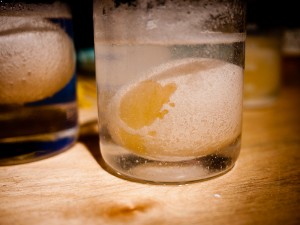It’s so much fun to be able to stay inside sometimes and just amaze your kids with new and fun science experiments. They will be filled with wonder and questions, so you’ll be able to teach them something new and they’ll develop an interest for science. When you and your kids create fun experiments it makes learning a blast, so with that being said, here are some super cool science experiments from The San Francisco Globe you can do around the house!
Microwave Ivory Soap
Cheap microwaves are easy to nab at thrift stores, or even a low end one at Walmart is always great to have around the house for when you want to perform a new experiment, but don’t want to risk the family microwave. Keep one out in your garage and you can plug it in and play any time and not really have to worry much about clean up. All you need for this fun experiment is that microwave and a bar of Ivory soap. Simply unwrap the bar of soap and place on a napkin or paper plate in the microwave. Microwave on high and watch through the front as the soap explodes and grows!
It creates a huge foam that can be used to demonstrate closed-cell foam formation, physical changes, and Charles’s Law. Charles’s Law is a gas law that describes how gases expand when exposed to heat. So as the microwave heats the soap, the tiny bubbles trapped inside the soap react and the volume of the gas inside them grows, thus creating that big explosion of foam.
You can talk to your kids about when you might see this law in action elsewhere, such as a balloon, heated, or the car tires during various seasons. You can also test out various other brands of soaps and compare notes. This is a fun experiment that is super cheap and super easy and have your kids engaged and excited to learn why the soap foams up!
“Naked” Eggs That Bounce
This is totally PG, we promise, and tons of fun at home with stuff you already have in the pantry and refrigerator. All you need are a few eggs, some mason jars or glasses, and plenty of white vinegar. Start off with a combination of boiled and raw eggs to make your naked eggs. You can talk to your kids about the hard, protective shell around the egg and the purpose of it, as well as the membrane that exists when you peel boiled eggs.
Take a boiled egg and a raw egg (or as many of each as you want) and soak them in a jar or glass of vinegar overnight. The next day, change the vinegar out and replace it with fresh vinegar and by the same time on the third day, you will have a naked egg floating in the vinegar! What happened while you weren’t looking is that the vinegar, which is about 4% acetic acid, made a chemical reaction with the calcium carbonate in the shell of the egg. The bubbles you saw being released were carbon dioxide from the reaction. Over time, the shell dissolved away in the vinegar, leaving just a fragile egg held together only by the thin membranes inside.
You can fish out your naked eggs and see the yolk inside, as well as – VERY CAREFULLY – bounce them lightly on the table. You may want to be prepared for some splats though this can get messy. Kids will love gently handling the squishy eggs and feeling the difference between the boiled naked egg and the raw eggs. You can even hold up a naked raw egg with a regular egg and show how much larger it is and explain the water being absorbed into the egg through the membrane. Hold your egg up to light as well and check out the way the light passes through the membrane and glows.
As an extra bonus you can soak a naked egg in corn syrup and dry it all the way out, down to just a yolk, then rehydrate it by soaking it in water. A lot of this is a bit of a waiting game, so if you want to do this portion you’ll have to start ahead.
This is a really neat way to explain osmosis to your kids, chemical reactions, hard shells and protective surfaces for eggs, as well as just generally have some sensory fun with the younger kids. We hope you have fun with your mini scientists and you all get to learn from these great science experiments!


No comments yet.